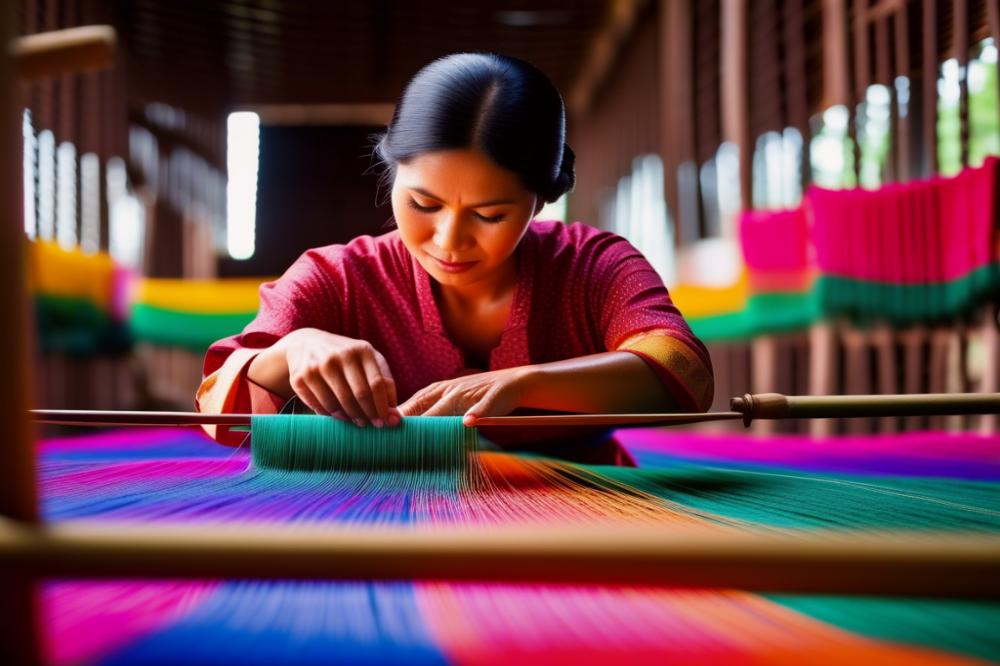Exploring the Heart of Cambodian Heritage
The Khmer Silk Farms in Cambodian-desserts”>Phnom Penh are more than just places where silk is made; they represent a deep cultural connection to Cambodia’s history and artistry. For centuries, silk production has been woven into the fabric of Cambodian life. Traditional weaving techniques have been passed down through generations, showcasing the skill and creativity of local artisans. Visitors to these farms witness firsthand the intricate processes involved in creating beautiful textile art.
Today, the rise of eco-tourism has sparked interest in exploring local handicrafts and sustainable farming practices. Many travelers seek authentic experiences that connect them with the culture they are visiting. Engaging with the Khmer Silk Farms offers a unique opportunity to learn about traditional weaving while supporting local communities. Tourists can appreciate not just the final products but also the hard work and dedication behind them.
Cambodia’s cultural heritage thrives as artisans preserve age-old methods of silk production. Every thread tells a story, reflecting the rich traditions of the Khmer people. As eco-tourism grows, so does the appeal of experiencing these traditions firsthand. A trip to these farms is not just about buying souvenirs; it’s about immersing oneself in a cultural experience that honors and respects the artistry of handmade goods.
The History of Silk Production in Cambodia
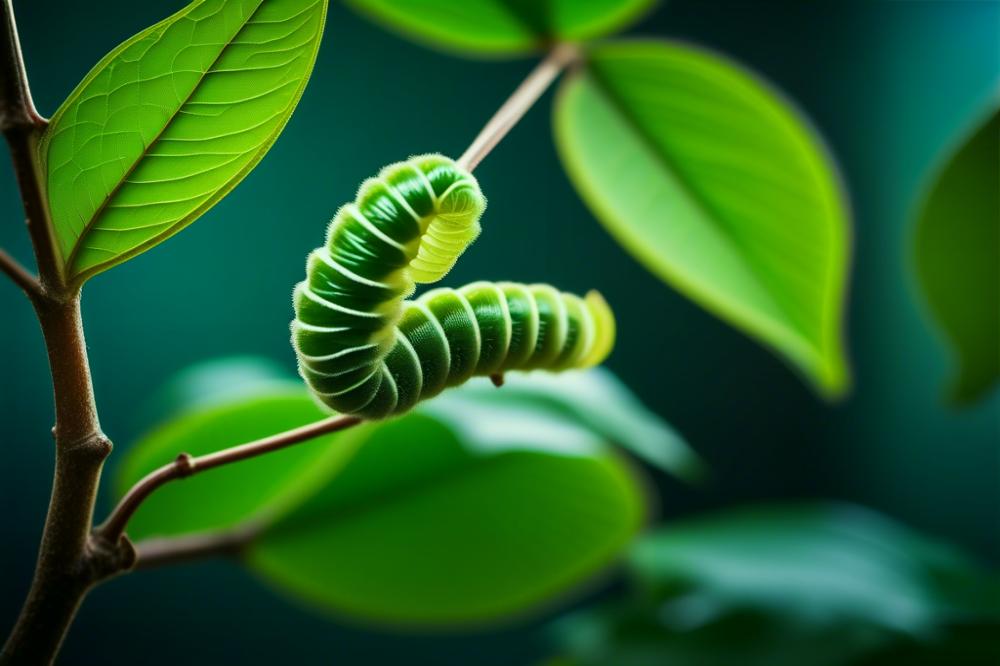
Cambodia has a rich history of silk production that dates back centuries. This craft is deeply rooted in the culture of the Khmer people. Textiles made from silk are not just fabric; they carry stories, traditions, and emotions. Almost every region in Cambodia has its unique patterns and styles, making their silk products really special.
During ancient times, silk was a symbol of status and wealth. The art of weaving not only reflected identity but also showcased craftsmanship. Royal families often wore garments crafted from the finest silk, underscoring its importance in society. This long-standing tradition has shaped the cultural heritage of the nation.
The Khmer Rouge era, which lasted from the late 1970s to the early 1980s, severely disrupted this silk production, resulting in a significant loss of knowledge and skills. Local artisans who had kept the craft alive were forced to abandon their looms and practice. However, after the regime’s downfall, a revival began. Many people started to reclaim their heritage by reviving traditional weaving techniques.
Today, this resurgence is evident in the increasing number of silk farms and workshops throughout the country. Local artisans are dedicated to sustainable farming practices that support both the environment and the community. Their work not only helps revive the craft but also contributes to the local economy through eco-tourism and handicrafts. Visitors can enjoy a rich cultural experience by witnessing the intricate process of silk production firsthand.
As you explore the vibrant world of Cambodian silk, it’s clear that this textile art signifies more than just a fabric. It represents resilience, creativity, and a desire to preserve cultural identity. The journey into the history of silk production in Cambodia reveals a profound connection between the past and the present, making it a vital part of the country’s narrative.
The Art of Traditional Weaving
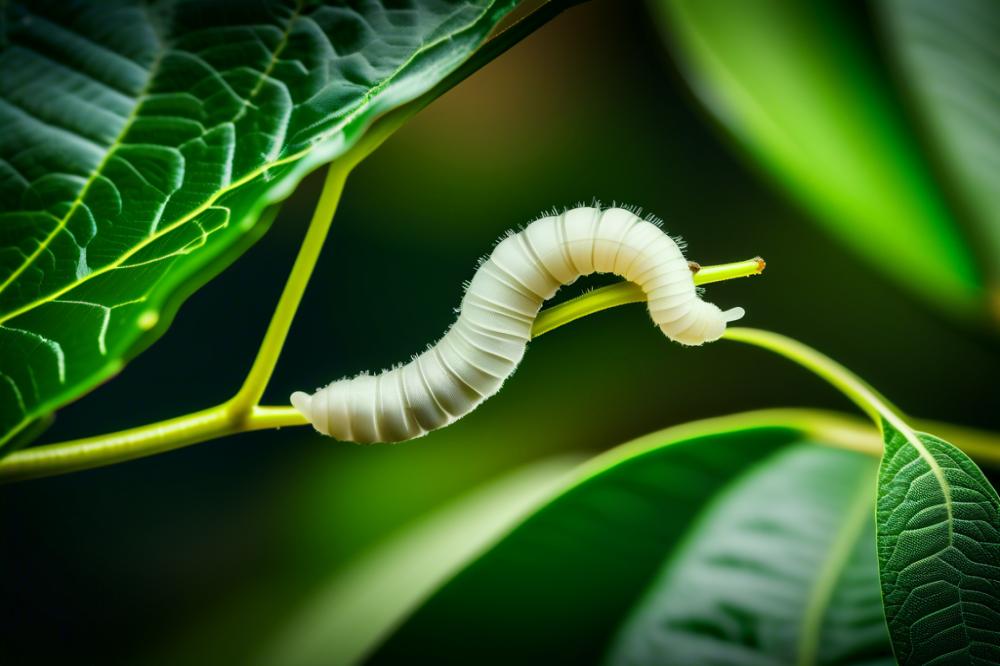
In Cambodia, silk production has deep roots in the history and culture of the people. The process of traditional weaving begins with local artisans who skillfully raise silkworms. These worms feast on mulberry leaves, spinning delicate cocoons. Each cocoon is then harvested and carefully unraveled to create long silk threads. This labor-intensive method highlights the dedication required by those who practice this remarkable craft.
Techniques of weaving have been passed down through generations. Using handlooms, artisans weave intricate designs and patterns into the fabric. The loom itself is a simple yet effective tool. Artisans skillfully maneuver the threads, creating stunning textiles that are both beautiful and meaningful. Each piece tells a story, reflecting the rich cultural heritage of the Khmer people.
Textile art holds a significant place in Cambodian society. Fabrics often feature motifs that represent nature, spirituality, and history. Designs can symbolize local traditions, legends, or community values. For instance, some patterns may depict mythical creatures or local flora, connecting the weaver to their roots and ancestors. Such details engage the observer, inviting them to discover the stories woven into each thread.
In a world leaning towards mass production, these skilled artisans uphold practices that embrace sustainable farming. Their commitment to eco-tourism and handicrafts promotes not only a better environment but a deep respect for their cultural heritage. Visitors to the Khmer Silk Farms can appreciate the artisans’ commitment to preserving their craft while enjoying a rich cultural experience. The opportunity to witness traditional weaving firsthand is truly a gift.
As you explore the beauty of Cambodian textiles, remember that each piece is a labor of love. The vibrant colors, striking patterns, and exquisite textures reflect the dedication and artistry of the local craftsmen. This small but significant art form connects the present with the past, reminding us of the importance of tradition in our ever-changing world.
Visiting Khmer Silk Farms
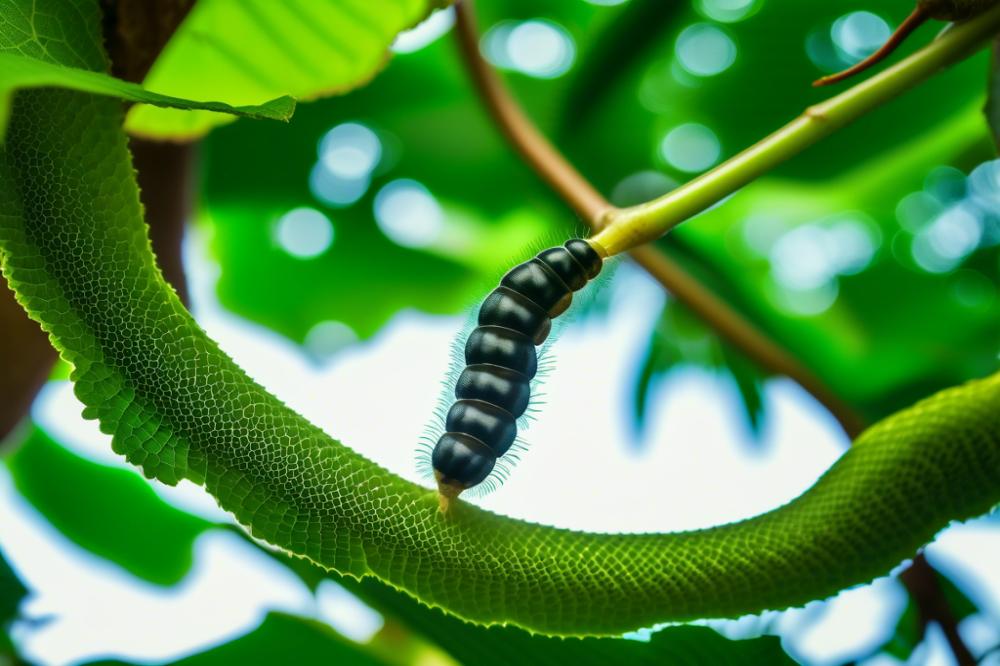
Exploring the silk farms in Phnom Penh is an enriching experience for anyone interested in Cambodia’s cultural heritage. The farms are easily accessible from the city center. Many tourists opt for tuk-tuks, as they are a popular and affordable way to travel. You can also hire a private car or use rideshare apps for convenience. It usually takes around 30 minutes to reach the farms.
Upon arrival, visitors can expect a warm welcome from local artisans. They are passionate about sharing their craft and knowledge. Guided tours are available and provide fascinating insights into the silk production process. Watching the delicate art of traditional weaving is truly mesmerizing. You’ll often see the entire process, from raw silk to finished textile art.
Workshops are another highlight for those eager to learn. Participants can try their hand at weaving or dyeing silk threads. This hands-on experience deepens your understanding of the craftsmanship involved in producing exquisite handicrafts. Local artisans teach you their skills, making this a personal and memorable way to engage with Cambodian culture.
Eco-tourism plays a significant role in the silk farms’ operation. Sustainable farming practices are emphasized, ensuring the environment is respected. Visitors can witness how this approach supports local communities. Engaging with these artisans not only promotes their work but also helps preserve traditional techniques passed down through generations.
Prepare yourself for a cultural experience that goes beyond the ordinary. The charm of Khmer silk farms lies in their personal touch and commitment to quality. Each visit supports local artisans directly, allowing you to take part in a meaningful journey. Immerse yourself in the world of silk, and you’ll leave with stories to tell and an appreciation for Cambodia’s vibrant textile art.
Sustainable Farming and Eco-Tourism
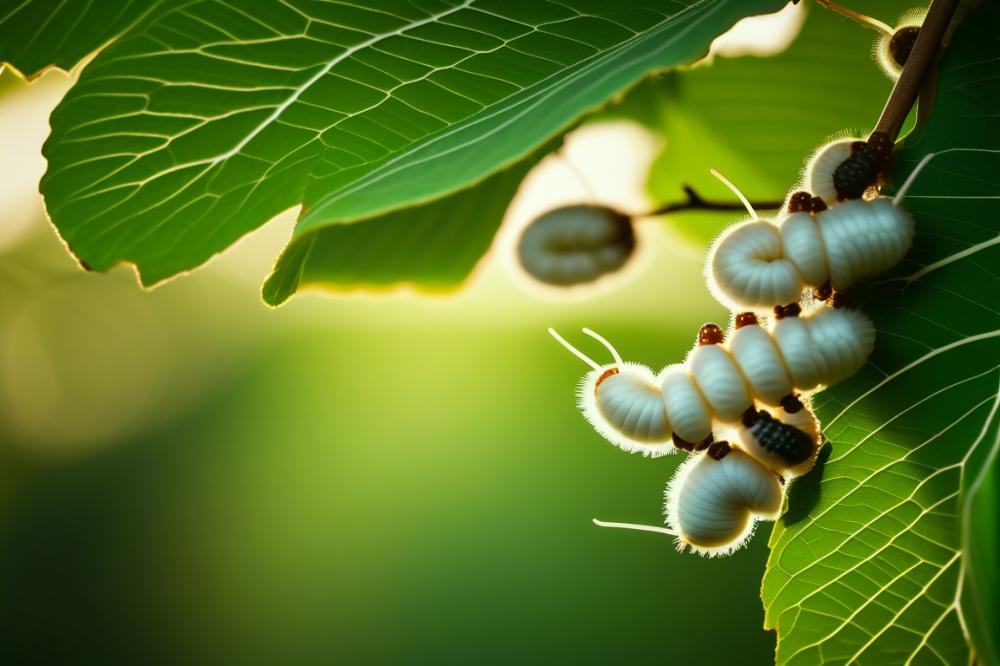
Sustainable practices in Khmer silk production play a vital role in preserving the environment and supporting local communities. Farmers use natural methods to cultivate silk, creating a small ecosystem that thrives without harmful chemicals. These approaches help maintain soil health and promote biodiversity. In this way, silk production becomes more than just a business; it transforms into a commitment to the land.
Local farms in Cambodia have embraced eco-tourism. Visitors can experience traditional weaving, which connects them with the cultural heritage of the country. Tourists learn from local artisans as they watch them craft exquisite handicrafts. By showcasing their skills, these artisans share a glimpse into their rich history. Each piece of silk reflects not only craftsmanship but also a story rooted in tradition.
Supporting sustainable farming brings many benefits. It fosters a sense of community pride among local farmers. Additionally, it provides them with fair wages, which is critical for their families’ wellbeing. Tourists who engage in eco-tourism contribute directly to the livelihoods of these artisans. As more people seek authentic cultural experiences, the demand for responsibly made silk grows stronger.
Investing in sustainable practices also safeguards the environment. Using organic farming techniques minimizes pollution and protects natural habitats. Tourists appreciate the chance to buy products crafted with care, knowing they are making a positive impact. Eco-tourism helps raise awareness about the importance of preserving traditional textile art while promoting economic growth in rural areas.
This delicate balance between culture and sustainability fosters a brighter future. The experience of visiting silk farms enables travelers to understand the nuances of the local way of life. Engaging with farmers and artisans enriches their journey, creating lasting memories. Both tourists and communities benefit when eco-tourism thrives alongside sustainable farming.
The Role of Local Artisans and Handicrafts
Local artisans play a vital role in the silk industry of Cambodia. Their expertise in traditional weaving techniques is what keeps this important craft alive. Generations of families have passed down these skills, creating a rich tapestry of textile art and cultural heritage. Each piece of silk represents not just fabric but stories of the people who create it.
Preserving handicrafts goes beyond mere aesthetic value. It is essential for maintaining a community’s identity. With younger generations gravitating towards modern careers, many artisans worry about the future of their craft. This challenge places their age-old traditions at risk. Eco-tourism offers them a platform, allowing visitors to experience the vibrant culture while supporting local economies.
Stories from the artisans reveal resilience in the face of adversity. One elderly weaver spoke of her struggles to find consistent work due to cheaper, mass-produced options. She emphasized the significance of her craft in her life. Handcrafted silk takes time, patience, and care, qualities often overlooked in the fast-paced, global market.
Economies benefit when local artisans succeed. Supporting traditional silk production ensures that these handcrafted items remain available for future generations. A visit to the studios creates a deeper understanding of the labor involved in producing exquisite textiles. Guests become part of a cultural experience that connects them directly to the artisans’ journeys.
The rise of sustainable farming practices in silk production reflects a commitment to both quality and tradition. Artisans are now exploring eco-friendly methods to grow silk. This shift is not just about the silkworms. It speaks to an awareness of the environment and the land they depend upon. Balancing tourism and artistic integrity can help drive this change.
Artisans face many obstacles in today’s economy. Young people drawn to urban life may abandon their heritage for modern opportunities. However, highlighting the importance of handicrafts can inspire pride in local cultures. Each creation tells a story, a connection to Cambodia that resonates with those who cherish authenticity in their purchases. By supporting local artisans, we help keep these stories alive, weaving the future of silk into the rich fabric of culture.
Wrapping Up Your Experience
Visiting silk farms in Phnom Penh offers a truly enriching cultural experience. Appreciating the art of traditional weaving reveals stories woven into each piece. Every fabric carries with it the spirit of craftsmanship, representing a vibrant history and culture.
Travelers should recognize the importance of supporting local artisans. When you buy handcrafted items, you help sustain their livelihoods and preserve age-old techniques. This practice is essential, especially in Cambodia, where silk production has deep roots in heritage.
Witnessing artisans at work creates a connection between visitors and the local community. Observing their dedication can inspire admiration and respect for their skills. Encouraging sustainable practices during travels not only benefits the environment but also fosters a sense of responsibility toward the cultures we explore.
Engagement with these beautiful crafts enriches holiday adventures. It’s an opportunity to reflect on the stories that each piece tells. Moreover, recognizing the effort behind each handmade item helps maintain these cherished traditions for future generations. As you journey through the silk farms, embrace the beauty and significance of what you encounter. Your visit matters.

